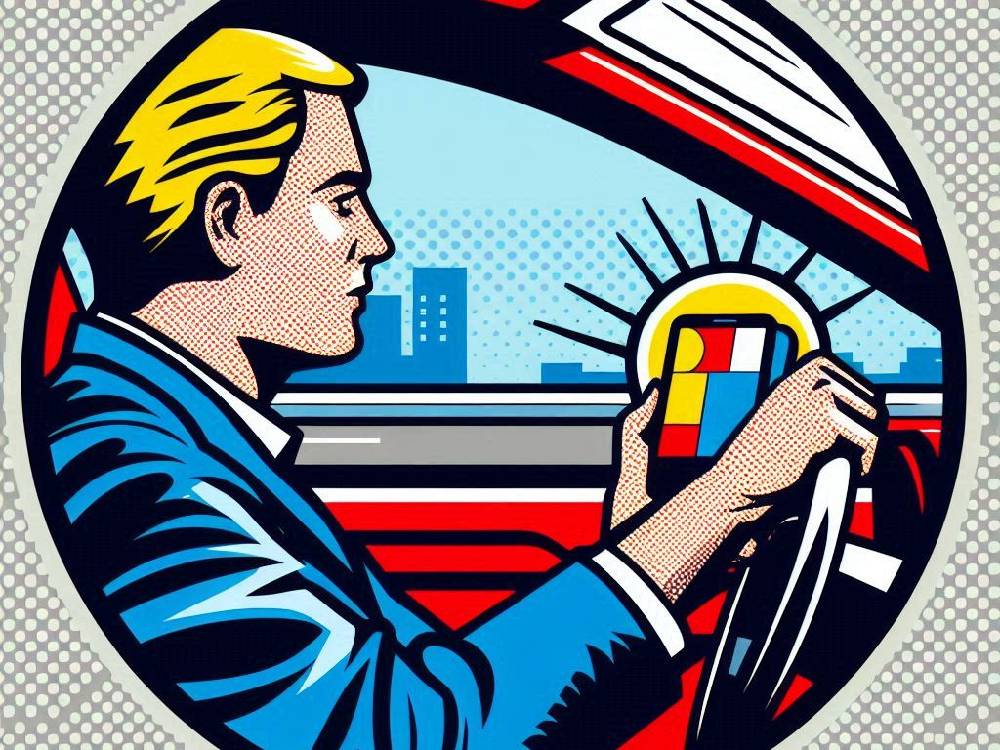Introduction
Could I lose my licence for using a mobile phone?
Every driver in the UK knows that driving responsibly isn’t just about following the rules.
It’s about ensuring safety for yourself and others on the road.
However, the advent of smartphones has introduced new challenges in road safety, particularly the temptation to use these devices while driving.
With the UK police deploying new mobile detection technology, it’s crucial for every driver to understand the implications of their choices behind the wheel.
Here’s what we’ll cover:
- An overview of cutting-edge mobile detection technology and its implications.
- Legal consequences associated with driving without a seatbelt and using a mobile phone.
- Insights into the trial expansion of this technology across UK police forces.
- The potential future of such technologies in monitoring and enforcing road safety.
Learn more about car insurance options
Broader Impact Of Mobile Phone Usage On Road Safety In The UK
A Game-Changer for Road Safety.
The UK’s commitment to road safety has taken a technological leap forward with the trial of mobile detection systems.
These systems, equipped with multiple cameras, are designed to detect whether drivers are using their mobile phones or not wearing seatbelts while driving.
Initially launched in 2021, the technology aims to reduce distracted driving by alerting offenders through warning letters about the dangers of their actions.
Isn’t that something?
The Scope Of The Trial
Who’s involved?
Ten police forces, including Durham, Greater Manchester Police, and Thames Valley Police, are actively participating in this trial.
The technology, which can be mounted on vehicles or trailers, offers a comprehensive view of both drivers and passengers, ensuring that no seatbelt or mobile phone offence goes unnoticed.
Why does this matter?
Facing The Consequences Of Using A Mobile Phone
What Are the Penalties?
The legal stakes for non-compliance are high.
Likewise, failing to wear a seatbelt can lead to fines of up to £500.
Furthermore, these stringent measures demonstrate a deep commitment to curbing dangerous driving behaviors, which greatly escalate the risk of accidents.
Discover ways to save on car insurance
The Real Risks Of Distracted Driving
Research is unequivocal—using your mobile phone while driving can make you four times more likely to be involved in a crash.
Furthermore, failing to wear a seatbelt doubles the risk of dying in a crash.
These stark statistics are at the heart of why this new technology and the associated legal measures have been put in place.
What do you think?
Public And Legal Response To New Driving Safety Measures
The introduction of this technology has sparked a mix of responses from the public and legal entities.
Most drivers who receive warning letters take heed, reflecting the effectiveness of this proactive approach to road safety education.
Explore the cheapest cars to insure in 2023
This detailed exploration into the UK’s use of mobile detection technology reveals a significant shift towards integrating technology with traditional policing methods to enhance road safety.
As we continue, we’ll delve deeper into how this technology is set to expand and its potential long-term impact on drivers and road safety across the nation.
Ready for more insights?
Continue reading as we dive into the future prospects and nationwide roll-out plans in the next section.
Future Prospects And Nationwide Roll-Out Plans
Currently, plans are actively unfolding to expand the deployment of mobile detection technology.
Importantly, for the first time, workers will mount the technology on gantries, providing a clear view of all traffic lanes.
This strategic expansion aims to enhance monitoring efforts and ensure uniform enforcement across diverse regions.
So, what does this mean for drivers?
Starting on 19 February, the extended trial will run until March 2025.
This period is essential for evaluating the technology’s effectiveness in various settings and traffic conditions.
Could this be a turning point?
Technological And Strategic Enhancements
With technological advancements, the potential applications for road safety are expanding significantly.
One key strategy involves integrating data processing with police systems to streamline the enforcement process.
This improvement will not only speed up legal actions against offenders but also enhance the overall efficiency of road safety measures.
And guess what else?
Ongoing investments in safety technology demonstrate a robust commitment from national authorities to minimize accidents and enhance driver safety.
This proactive approach not only aids immediate enforcement but also promotes long-term behavioral changes among motorists.
Isn’t that a crucial step forward?
Broader Impact Of Mobile Phone Usage On Road Safety In The UK
The introduction of this technology will likely radically alter driving behaviors across the nation.
By increasing driver awareness of their actions and the associated dangers, the technology fosters a stronger culture of safety.
Moreover, the valuable insights gained from this research play an instrumental role in shaping future traffic regulations and safety strategies.
Ready to see the broader effects?
England’s motorways, already among the safest in the world, are set to become even safer with these technological advancements.
The collaborative efforts between law enforcement and road safety authorities are pivotal in achieving these ambitious safety objectives.
Curious about how this impacts your daily drive?
Discover how technology influences car insurance rates
Conclusion
The adoption of mobile detection technology in the UK’s road safety arsenal marks a significant advancement in combating distracted driving.
This technology serves as a powerful deterrent and additionally plays a crucial role in educating drivers about the consequences of non-compliance.
Eager to learn more about how you can contribute to road safety and potentially lower your insurance costs?
Explore effective ways to reduce your car insurance premiums
Gain insights into young drivers’ insurance solutions
Learn the differences between comprehensive and third-party insurance
Together, with the right technology and cooperative efforts, the future of road safety in the UK looks incredibly promising.







